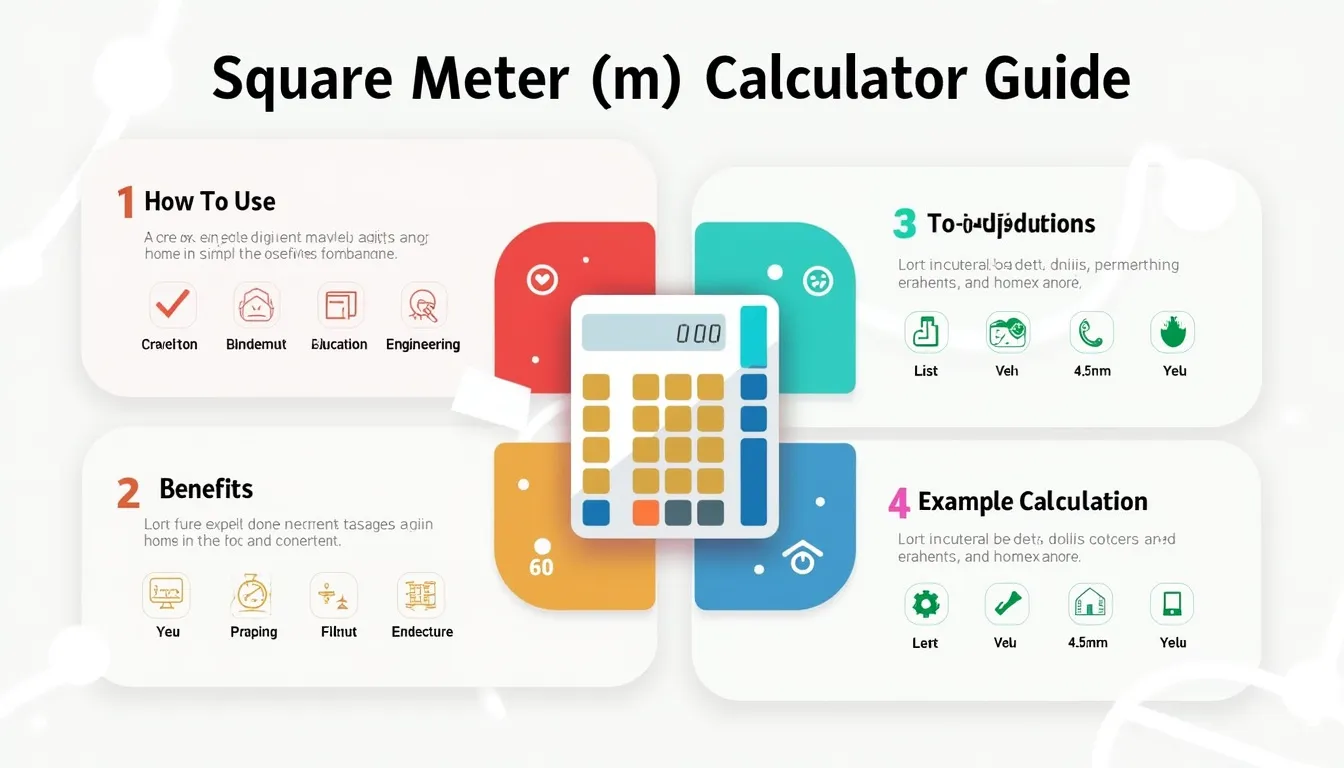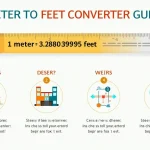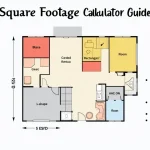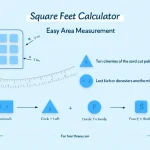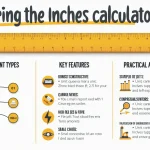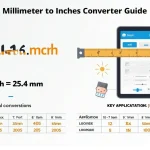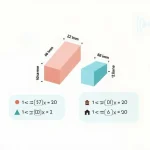Is this tool helpful?
How to Use the Square Meter (m²) Calculator Effectively
Our Square Meter (m²) Calculator is designed to help you quickly and accurately calculate the square of any number, with optional unit conversion. Here’s a step-by-step guide on how to use this tool effectively:
- Enter the value: In the “Enter a number (m)” field, input the number you want to square. This can be any real number, including positive, negative, or decimal values. For example, you might enter 5, -3.14, or 0.25.
- Select a unit (optional): If you’re working with specific measurements, choose a unit from the dropdown menu. Options include:
- None (for unitless calculations)
- Meters (m)
- Centimeters (cm)
- Feet (ft)
- Inches (in)
- Click “Calculate”: Once you’ve entered your value and selected a unit (if applicable), click the “Calculate” button to see the result.
- View the result: The calculator will display the squared value below the form. If you selected a unit, the result will include the appropriate squared unit (e.g., m², cm², ft², in²).
The calculator will handle the mathematical operation for you, applying the squaring formula:
$$m^2 = m \times m$$Where m is the input value you provided.
Understanding the Square Meter (m²) Calculator: Definition, Purpose, and Benefits
The Square Meter (m²) Calculator is a versatile online tool designed to compute the square of any given number, with the added functionality of unit conversion for common length measurements. This calculator serves multiple purposes and offers numerous benefits to users across various fields and applications.
Definition and Core Functionality
At its core, this calculator performs a simple yet fundamental mathematical operation: squaring a number. In mathematical terms, squaring a number means multiplying it by itself. The formula for this operation is:
$$m^2 = m \times m$$Where m is any real number.
While this operation might seem straightforward, our calculator extends its functionality by incorporating unit conversions, making it particularly useful for area calculations and other practical applications.
Purpose of the Square Meter Calculator
The primary purposes of this calculator include:
- Quick Calculations: Provide instant results for squaring operations, saving time and reducing the risk of manual calculation errors.
- Area Calculations: Facilitate easy computation of areas when working with length measurements in various units.
- Unit Conversion: Automatically handle unit conversions for squared values, eliminating the need for separate conversion steps.
- Educational Tool: Serve as a learning aid for students and educators to visualize and understand the concept of squaring numbers and calculating areas.
- Professional Assistance: Aid professionals in fields such as engineering, architecture, and construction in their daily calculations.
Benefits of Using the Square Meter Calculator
Utilizing this calculator offers several advantages:
- Accuracy: Eliminates human error in calculations, ensuring precise results every time.
- Time-Saving: Performs calculations instantly, significantly reducing the time needed for manual computations.
- Versatility: Handles a wide range of inputs, including positive, negative, and decimal numbers.
- Unit Flexibility: Offers multiple unit options, making it useful for various applications and industries.
- User-Friendly Interface: Designed with simplicity in mind, making it accessible to users of all skill levels.
- No Installation Required: As a web-based tool, it’s readily available without the need for software installation.
- Mobile Compatibility: Accessible on various devices, allowing for calculations on-the-go.
- Educational Value: Helps reinforce mathematical concepts related to squaring and area calculations.
Addressing User Needs and Solving Specific Problems
The Square Meter (m²) Calculator is designed to address various user needs and solve specific problems across different fields and applications. Let’s explore how this tool can be beneficial in various scenarios:
1. Construction and Architecture
In the construction and architecture industries, calculating areas is a frequent task. The Square Meter Calculator simplifies this process:
- Floor Area Calculations: Quickly determine the square footage of rooms or buildings.
- Material Estimation: Calculate the amount of flooring, tiling, or roofing materials needed for a project.
- Land Area Measurements: Easily compute lot sizes or property areas.
Example Calculation: An architect needs to calculate the floor area of a square room measuring 4.5 meters on each side.
- Input: 4.5 (with unit set to meters)
- Output: 4.5² = 20.25 m²
This result helps the architect quickly determine the room’s area for planning purposes.
2. Education and Mathematics
For students and educators, the calculator serves as an excellent learning and teaching tool:
- Concept Reinforcement: Helps students understand the concept of squaring numbers.
- Geometry Practice: Assists in solving geometry problems involving areas.
- Quick Verification: Allows students to check their manual calculations.
Example Calculation: A student is learning about negative numbers and needs to square -3.5.
- Input: -3.5 (with no unit selected)
- Output: (-3.5)² = 12.25
This helps the student understand that squaring a negative number always results in a positive number.
3. Engineering and Scientific Calculations
Engineers and scientists often need to perform quick calculations involving squared values:
- Area Calculations: Compute cross-sectional areas in fluid dynamics or structural engineering.
- Unit Conversions: Easily convert between different squared units of measurement.
- Data Analysis: Calculate squared values for statistical analyses or error calculations.
Example Calculation: An engineer needs to calculate the cross-sectional area of a circular pipe with a radius of 2.5 inches.
- Input: 2.5 (with unit set to inches)
- Output: 2.5² = 6.25 in²
The engineer can then use this value in further calculations, such as determining the pipe’s flow capacity.
4. Home Improvement and DIY Projects
Homeowners and DIY enthusiasts can benefit from the calculator for various projects:
- Paint Estimation: Calculate wall areas to determine how much paint is needed.
- Gardening: Compute planting areas or lawn sizes for landscaping projects.
- Furniture Placement: Determine if furniture will fit in a given space by calculating area requirements.
Example Calculation: A homeowner wants to calculate the area of a square garden plot measuring 8 feet on each side.
- Input: 8 (with unit set to feet)
- Output: 8² = 64 ft²
This information helps the homeowner plan their garden layout and determine how much soil or mulch they might need.
5. Fitness and Health
In health and fitness applications, the calculator can be useful for:
- Body Surface Area (BSA) Calculations: Assist in determining medication dosages or assessing burn injuries.
- Exercise Space Planning: Calculate area requirements for home gyms or workout spaces.
Example Calculation: A fitness enthusiast wants to determine the area needed for a square yoga mat measuring 68 cm on each side.
- Input: 68 (with unit set to centimeters)
- Output: 68² = 4,624 cm²
This calculation helps in planning space requirements for yoga practice.
Practical Applications and Use Cases
The Square Meter (m²) Calculator finds applications in various real-world scenarios. Let’s explore some practical use cases to illustrate its versatility:
1. Real Estate and Property Management
In the real estate industry, accurate area calculations are crucial for property valuation, listing, and management.
Use Case: A real estate agent needs to calculate the total floor area of a square-shaped apartment.
- Scenario: The apartment measures 12 meters on each side.
- Calculation:
- Input: 12 (with unit set to meters)
- Output: 12² = 144 m²
- Application: The agent can use this information to accurately list the apartment’s size, compare it with similar properties, and determine an appropriate pricing strategy.
2. Landscaping and Gardening
Landscapers and gardening enthusiasts often need to calculate areas for planning and material estimation.
Use Case: A landscaper is designing a square water feature for a public park.
- Scenario: The water feature will be 5.5 meters on each side.
- Calculation:
- Input: 5.5 (with unit set to meters)
- Output: 5.5² = 30.25 m²
- Application: This calculation helps the landscaper determine the amount of waterproof lining needed, estimate water volume, and plan surrounding landscaping elements.
3. Solar Panel Installation
Solar energy professionals use area calculations to determine panel placement and system capacity.
Use Case: A solar installer is assessing roof space for panel installation.
- Scenario: The available square roof area measures 20 feet on each side.
- Calculation:
- Input: 20 (with unit set to feet)
- Output: 20² = 400 ft²
- Application: The installer can use this information to determine how many solar panels can fit in the space and estimate the potential energy output of the system.
4. Textile and Fabric Industry
In textile manufacturing and tailoring, area calculations are essential for material estimation and pricing.
Use Case: A tailor needs to calculate the fabric area for a square tablecloth.
- Scenario: The tablecloth needs to be 54 inches on each side.
- Calculation:
- Input: 54 (with unit set to inches)
- Output: 54² = 2,916 in²
- Application: This calculation helps the tailor determine the amount of fabric needed, estimate costs, and plan the cutting process.
5. HVAC System Design
Heating, Ventilation, and Air Conditioning (HVAC) professionals use area calculations for system sizing and efficiency planning.
Use Case: An HVAC technician is sizing an air conditioning unit for a square room.
- Scenario: The room measures 15 feet on each side.
- Calculation:
- Input: 15 (with unit set to feet)
- Output: 15² = 225 ft²
- Application: The technician uses this area to determine the appropriate BTU (British Thermal Unit) capacity needed for efficient cooling of the space.
6. Packaging and Shipping
Logistics and packaging industries often require area calculations for material optimization and cost estimation.
Use Case: A packaging designer is creating a square box for a new product.
- Scenario: The box base needs to be 30 centimeters on each side.
- Calculation:
- Input: 30 (with unit set to centimeters)
- Output: 30² = 900 cm²
- Application: This calculation helps the designer determine the amount of material needed for the box base, optimize packaging efficiency, and estimate production costs.
Frequently Asked Questions (FAQ)
Q1: What is the Square Meter (m²) Calculator used for?
A1: The Square Meter Calculator is used to compute the square of any given number, with optional unit conversion. It’s particularly useful for area calculations in fields like construction, real estate, engineering, and education. The calculator can handle various units of measurement, making it versatile for different applications.
Q2: Can I use this calculator for negative numbers?
A2: Yes, the calculator can handle negative numbers. When you square a negative number, the result is always positive. For example, if you input -5, the calculator will return 25 (since -5 × -5 = 25).
Q3: What units of measurement does the calculator support?
A3: The calculator supports several common units of length measurement:
- Meters (m)
- Centimeters (cm)
- Feet (ft)
- Inches (in)
Q4: How do I calculate the area of a rectangle using this tool?
A4: While this calculator is designed for squaring numbers, you can use it to help calculate rectangular areas. For a rectangle, you would:
- Calculate the square of the length
- Calculate the square of the width
- Multiply these results together and take the square root
- 3² = 9 m²
- 4² = 16 m²
- √(9 × 16) = √144 = 12 m²
Q5: Is there a limit to the size of numbers I can input?
A5: The calculator can handle a wide range of numbers, from very small decimals to very large integers. However, for extremely large numbers, it’s always a good idea to verify the results with an additional calculation method if precision is critical for your application.
Q6: How does this calculator handle rounding?
A6: The calculator typically displays results to four decimal places for precision. This level of detail is sufficient for most practical applications while maintaining readability.
Q7: Can I use this calculator for scientific notation?
A7: The current version of the calculator is designed to work with standard decimal notation. For calculations involving scientific notation, it’s recommended to convert the number to standard form first, then use the calculator.
Q8: How is this calculator useful in education?
A8: In educational settings, this calculator serves multiple purposes:
- It helps students understand the concept of squaring numbers
- It can be used to verify manual calculations, aiding in self-checking and learning
- It demonstrates the relationship between linear measurements and area
- It introduces the concept of unit conversion in the context of area calculations
Q9: Can this calculator be used for volume calculations?
A9: While this calculator is primarily designed for area (square) calculations, it can be a helpful tool in volume calculations for cube-shaped objects. By inputting the length of one side of a cube, the result will give you the surface area of one face. To get the volume, you would need to multiply this result by the length of the side again.
Q10: How accurate is this calculator?
A10: The Square Meter Calculator uses standard computer arithmetic to perform its calculations, which is highly accurate for most practical purposes. The results are displayed to four decimal places, providing a good balance between precision and usability for most applications.
Q11: Can I use this calculator for currency conversions?
A11: This calculator is not designed for currency conversions. It’s specifically for squaring numbers and calculating areas. For currency conversions, it’s best to use a dedicated currency conversion tool that can account for up-to-date exchange rates.
Q12: Is there a mobile app version of this calculator?
A12: Currently, this Square Meter Calculator is a web-based tool accessible through internet browsers on various devices, including smartphones and tablets. This means you can use it on your mobile device by simply visiting the website, without the need for a separate app installation.
Q13: How can this calculator be used in real estate?
A13: In real estate, this calculator is particularly useful for:
- Quickly calculating the area of square or rectangular rooms
- Determining property sizes for listings
- Estimating flooring or painting requirements
- Comparing property sizes across different unit systems (e.g., converting between square feet and square meters)
Q14: Can this calculator be used for metric to imperial conversions?
A14: While the calculator allows you to input and display results in different units (meters, centimeters, feet, inches), it doesn’t directly convert between metric and imperial systems. However, you can use it to calculate areas in both systems separately and then compare the results.
Q15: How does this calculator handle very small decimal numbers?
A15: The calculator can handle very small decimal numbers accurately. For instance, if you input 0.001 (1 millimeter), it will correctly calculate the result as 0.000001 square units. This makes it useful for precise calculations in fields like microelectronics or nanotechnology.
Important Disclaimer
The calculations, results, and content provided by our tools are not guaranteed to be accurate, complete, or reliable. Users are responsible for verifying and interpreting the results. Our content and tools may contain errors, biases, or inconsistencies. We reserve the right to save inputs and outputs from our tools for the purposes of error debugging, bias identification, and performance improvement. External companies providing AI models used in our tools may also save and process data in accordance with their own policies. By using our tools, you consent to this data collection and processing. We reserve the right to limit the usage of our tools based on current usability factors. By using our tools, you acknowledge that you have read, understood, and agreed to this disclaimer. You accept the inherent risks and limitations associated with the use of our tools and services.
